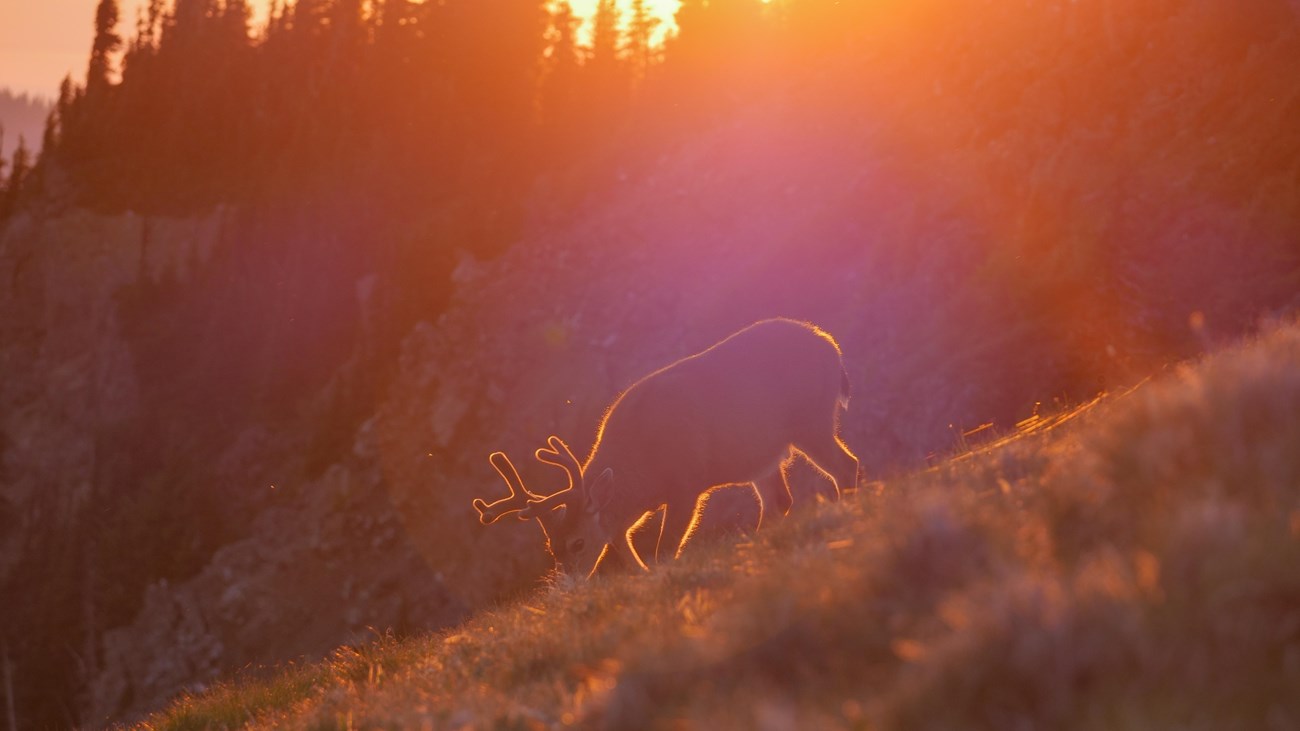Last updated: July 5, 2024
Thing to Do
Observe Animals at Olympic National Park

NPS/E. Goode
Take home great memories of Olympic National Park by viewing wildlife ethically – in a way that respects the space wild animals need to live free from harassment. All park wildlife are potentially dangerous to humans and can sometimes be unpredictable.
Olympic National Park offers unique opportunities to observe diverse wildlife, from marine mammals and eagles to elk and bears or to high alpine animals such as the Olympic marmot. When you visit the park, you are visiting their home.
"The Best Relationship is a Long-Distance Relationship"
Please keep a respectful distance (at least 75 ft, 23 m, or the length of two buses) at all times to give wildlife the opportunity to hunt, raise their young, rest, and live free from human harassment. Park regulations prohibit the feeding, touching, teasing, calling, frightening or intentional disturbance of wildlife.
View Wildlife Ethically
-
Do Not Feed Wildlife - Including Birds
It's not just a snack. Animals that get used to eating human food are often attracted to roads, where deadly accidents can happen. Human food can also weaken wild animals’ immune and digestive systems, leading to sickness. Unfortunately, some animals have become conditioned to seek human food—it is your responsibility to store your food and trash responsibly so that widlife cannot get it.
-
Give them Room – Use Your Zoom!
By using binoculars or a telephoto lens, you’ll see more of an animal’s natural behavior and activity. Elk and other wildlife, including birds, need space free from harassment to hunt, raise their young, and rest. If an animal responds to your presence, you are too close - it is your responsibility to move away if an animal approaches you.
-
Stay on Trails, Leash your Dog, and Keep Your Kids Close
Straying off trails can damage important wildlife habitat. Dogs and kids running wild can be seen as predators by species such as deer, elk, marmots, and otters, causing them to charge; or as prey by species such as bears or cougars, causing them to attack.
Thank you for being a steward of Olympic National Park!
This activity is blanket guidance for how to ethically observe wildlife in Olympic National Park. These guidelines are applicable to and can be practiced by everyone.
Some wildlife can be viewed from roadsides, parking lots, or even from your vehicle. If you choose to hike, not every trail in the park meets ADA standards for accessibility to wheelchair users or those with other mobility needs. Detailed information on the twenty most popular trails, written by and for people with disabilities, are available at this link.
If you work with a service animal, be aware that some wildlife may respond to the presence of dogs with fear, curiosity, or aggression, so always keep a safe distance.
